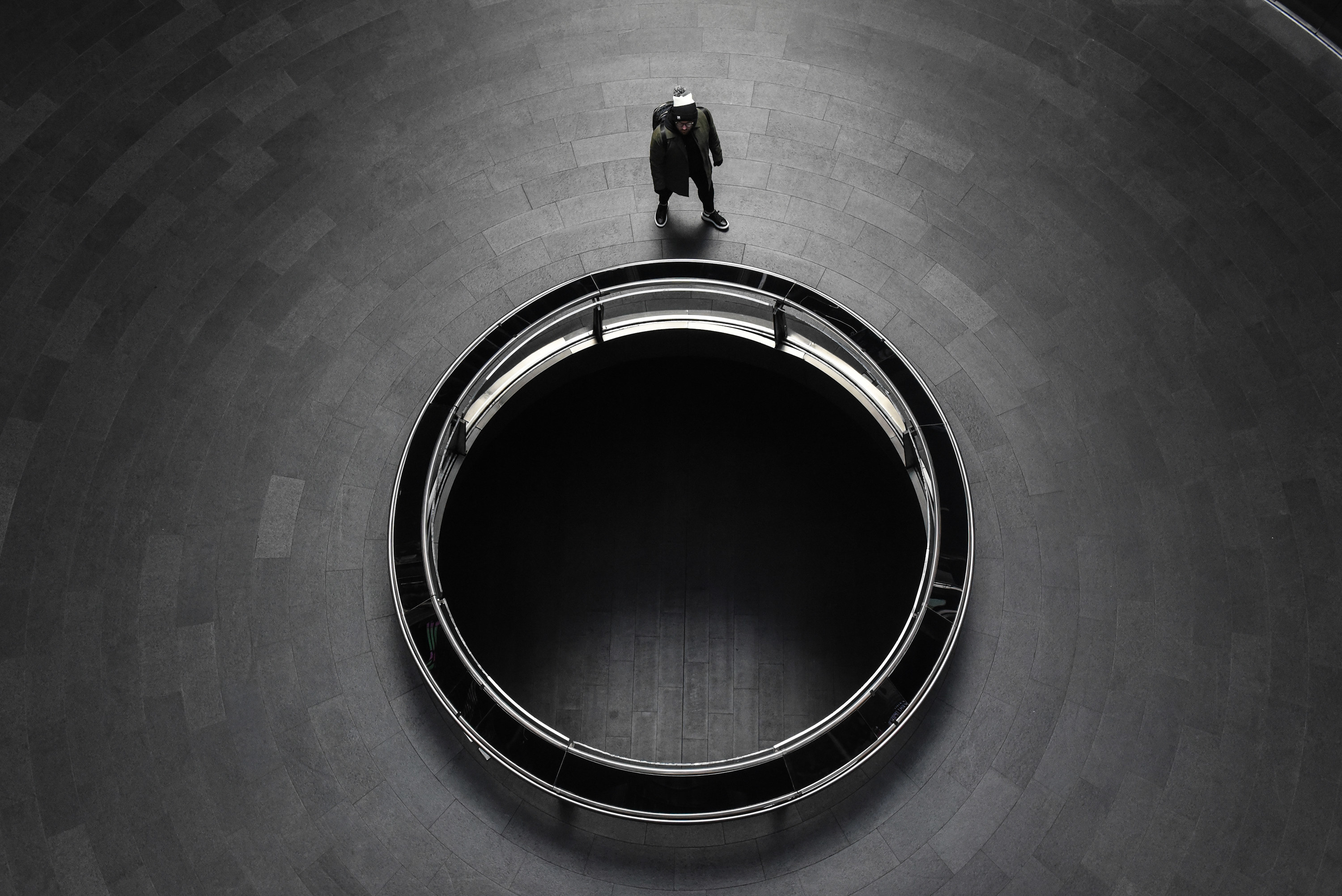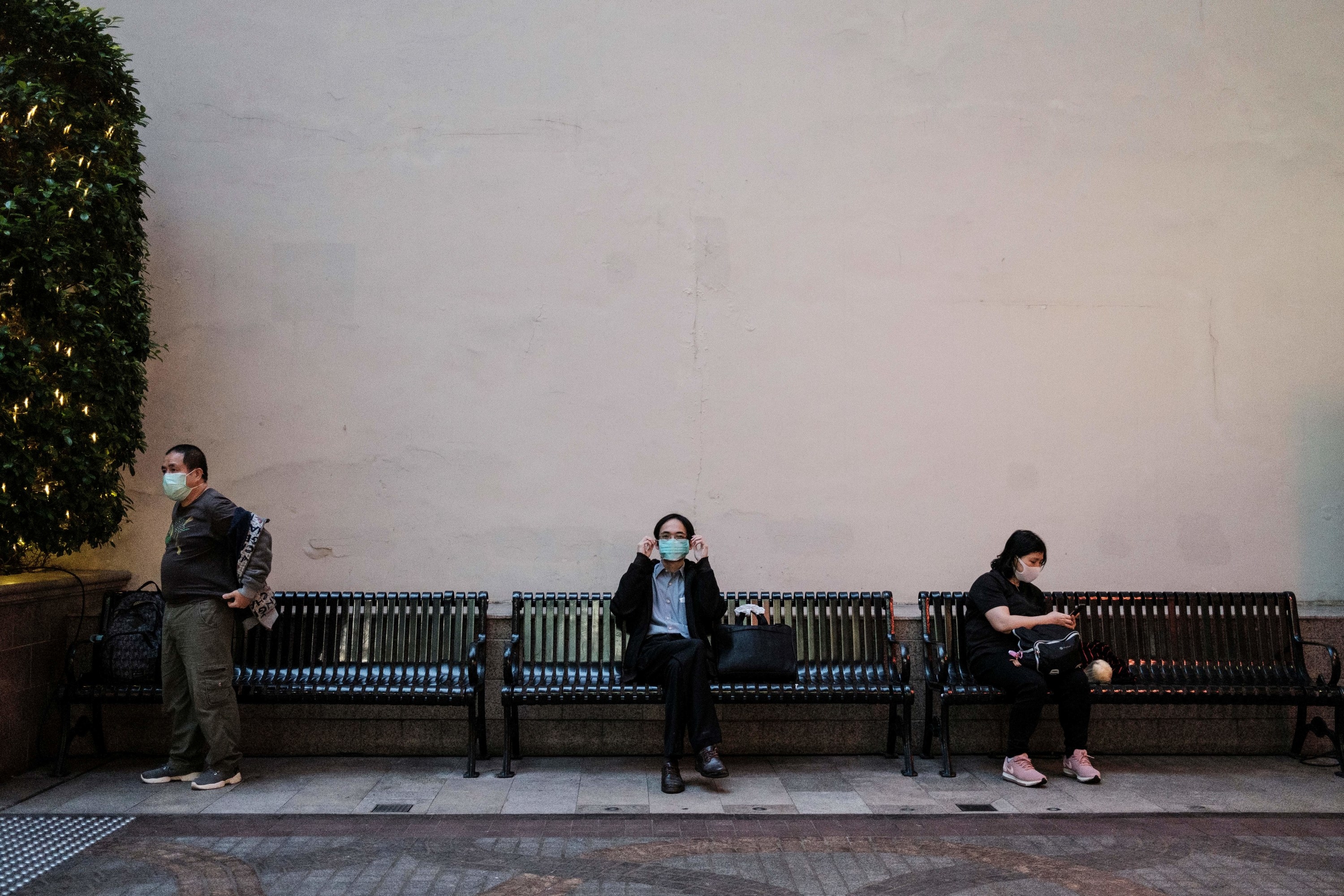- Coronavirus
After living in Hong Kong I learned that small acts add up to large protections, and it’s the least we can do for those around us.
ByRosalind Adams
A person walks through the Fulton Center station in Lower Manhattan on March 15, 2020 in New York City.
I was living in Hong Kong when the first case of coronavirus was confirmed in the city on January 23. The same week, China shut down the city of Wuhan.
Life changed — and quickly. Hong Kong’s seven and a half million residents live in some of the densest neighborhoods in the world. Almost immediately, the number of people on the street and on public transportation dwindled, as people kept themselves at home to avoid exposure. Within days, the government directed civil servants to work from home, and private employers largely followed suit.
Hong Kong had been through something like this before. In 2003, SARS had killed hundreds in the city, and the memory remains fresh in the minds of many. People understood their responsibility to keep themselves and others safe. Sanitizer, rubbing alcohol and face masks flew off the shelves. Other countries advised residents to wear a mask only when sick, but it became impolite not to wear one in Hong Kong. Even smokers did their part, poking holes at the mouth for cigarettes so they could continue to smoke in Hong Kong’s narrow alleyways.
Each story about a new case in Hong Kong sparked retweets and texts to friends. There was the family of nine sharing hot pot who all caught the disease, and then it seemed to have spread through the pipes of a building when two residents living on different floors caught it. Back then there was less information how it was spreading and how infectious it was. The first death in Hong Kong came in early February: a man who had traveled to Wuhan had crossed the border back into Hong Kong in late January.
Major events started falling. The Hong Kong marathon was canceled; schools, parks and museums were closed, concerts and festivals were postponed. Even Disneyland closed and offered up its land for quarantine sites.
It wasn’t just big events that were canceled. Small things changed too. Elevator buttons were covered in plastic and more frequently sanitized. Shop owners diligently scrubbed the handles of their entrances. Friends canceled dinners and parties. Restaurants and coffee shops were emptier, and some of them closed for good. “No fun stuff in Hong Kong anymore” was the refrain in my group chats.
The emptiness of the city and all the cancelations felt apocalyptic at first. Everything seemed to be over. The first time I had a temperature gun pointed at me, I prickled. It’s invasive to have something pointed directly at your forehead, and then there’s the twinge of fear that maybe you won’t pass the test. But then it became routine — walking into the building where a friend lived, mailing a package at the post office, meeting up with friends at a bar. WeWork and social clubs temperature-checked people, too. After a while, seeing people in masks and the temperature checks and the large dispensers of hand sanitizer everywhere started to feel like a comfort — everyone wanted to keep each other safe.
The response in Hong Kong wasn’t perfect. After months of violent protests in the city, the spread of COVID-19 compounded a lot of the anger that residents already felt toward their government for being too beholden to Beijing. Health care workers went on strike, demanding the semi-autonomous region close its borders with China. Others wanted government measures to stop price gouging on masks. Rumors of toilet paper production delays in China led to runs on supplies and long lines when they were available.
But more than a month after the first case, the number of cases in Hong Kong has remained low while they have skyrocketed in other countries. There’s been fewer than 150 cases and four deaths in the city so far. More recent evidence shows that the social distance measures in Hong Kong effectively ended the flu season, too.
As I got ready to return to the United States in early March, New York was still largely unaffected even though the United States had confirmed its first case, in Washington state, on January 21 — two days before Hong Kong had theirs. New York got its first case a couple days before I flew back.
When I landed in JFK on March 3, though, I was surprised when no one took my temperature, asked about symptoms or if I had had contact with anyone who had been infected. Even basic measures didn’t seem to be in place. An officer glanced at my passport, asked if I had traveled anywhere else and then waved me through customs. When I got to the building where I was staying, a clerk asked me if I was sick or just paranoid when he spotted the paper mask under my chin that I had worn on the flight. Many people seemed indifferent to an epidemic that was already wreaking havoc across the globe and that had been making headlines for months.
I’ve been back in New York for a week and a half — In that time, I’ve watched a swift transformation as the state declared an emergency, a containment zone was created in New Rochelle, Broadway has gone dark, and schools have now shuttered. New York City alone has gone from having its first case to hundreds of cases. And amid widespread complaints about access to testing, the real number of cases is almost certainly much higher.
People in Hong Kong on March 12.
The ripples of fear, the text messages to friends of disbelief in what has been canceled next, the uncertainty of how life will change all feel similar to what happened in Hong Kong back in January. Even experiencing it again, it’s jarring to have so many familiarities pulled away from you all at once — whether it’s sports games or shows or our working routines.
In the last couple of weeks, things have flipped. On Sunday, the Hong Kong government issued a travel alert against going to the United States and ordered people arriving from a host of countries — including the U.S. — into quarantine. Now the west is the threat as the number of cases follows a trajectory close to Italy and Spain while in Hong Kong the number of cases has largely flattened for now.
Our healthcare system is about to undergo a massive test. But what I learned in Hong Kong is that the small acts add up. Fatality rates are higher in countries that don’t take as many measures to contain the virus. The closures of large events aren’t a sign of doom. They shift our lives, but show we’re doing something to contain this. As strange as things are right now, life adjusts and finds a new normal — and it’s the least we can do for those around us.
Rosalind Adams is a world correspondent for BuzzFeed News and is based in Hong Kong.
Contact Rosalind Adams at [email protected].
Got a confidential tip? Submit it here.
Source: Read Full Article





